
All categories
Featured selections
Trade Assurance
Buyer Central
Help Center
Get the app
Become a supplier

(156767 products available)















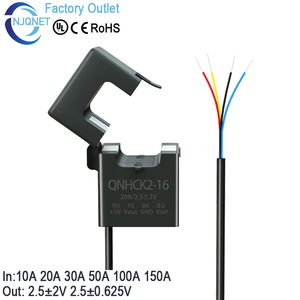
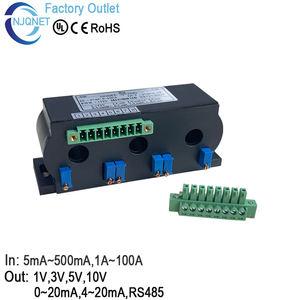





















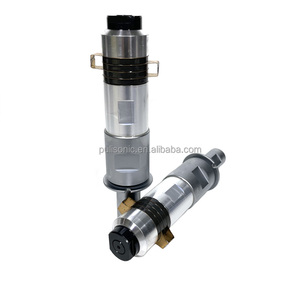


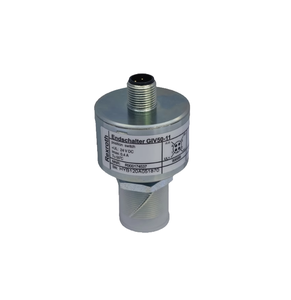


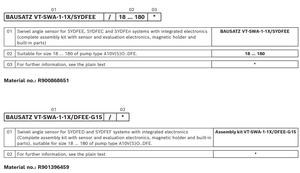
Pressure Transducers
A pressure transducer is a device that converts pressure measurements into an electrical signal. These transducers are crucial in different industrial applications since they can test and monitor critical pressures in fluids and gases. Common applications include the oil and gas industry, aerospace, and any arena where fluid dynamics play a critical role in process security and efficiency.
Temperature Transducers
Conversely, temperature transducers convert temperature measurements into a readable format, such as an electrical signal. Thermocouples and Resistance Temperature Detectors (RTDs) are traditional sensor forms. These elements are critical in process control in manufacturing and energy production, where temperature regulation is vital for safety and productivity.
Level Transducers
Level transducers measure fluid levels in tanks and other containers, translating the measurements into electrical signals. They find utility in oil and gas and chemical processing industries, where monitoring liquid inventories is vital. Among the popular types are capacitive and Ultrasonic transducers. They accurately provide level data and help avoid overflows and shortages by predicting and displaying fluid levels in real time.
Flow Transducers
Transducers measure and analyze the flow of liquids or gases. They can be integrated into process control in various industries, including water treatment, chemical manufacturing, and power generation. By providing real-time flow information, these transducers help optimize resource utilization, maintain system balance, and prevent potential operational issues arising from abnormalities in flow.
Position Transducers
As their name suggests, position transducers will measure displacement or the position of an object, converting the mechanical movement into an electrical signal. They are commonly used in industries like automation and robotics because several processes require accuracy in moving parts. There are, for example, Linear Variable Differential Transformers (LVDTs) and Potentiometer position transducers. These transducers are important for accuracy and efficiency in equipment regarding systems that depend on precise movement.
Sensing Element Materials
The sensing elements of transducers must be fabricated from highly heat-conductive materials, as this is the only way to ensure efficiency, especially for temperature transducers. These materials can vary widely, from metals like platinum and copper used in thermocouples and RTDs to semiconductor materials in more advanced devices. For pressure transducers, materials like stainless steel, titanium, or nickel alloys are often used for their strength and resistance to deformation under high pressures.
Housing and Shell Materials
Concerning the durability of transducers, especially in harsh industrial environments, proper selection of the housing materials is significant in guaranteeing long life. This transducer housing is normally made from rugged materials like aluminum, stainless steel, or polycarbonate, which are highly durable and protect sensitive components from extremes of temperature, pressure, and exposure to corrosive chemicals. Stainless steel is common in industries like oil and gas because of its resistance to high-temperature corrosion and oxidation.
Diaphragm Materials
Industrial transducer specifications normally require that diaphragms be made of flexible and strong materials, but particularly in high-pressure environments. Common materials include fluoropolymers and elastomers. These materials also have to withstand chemical corrosion while maintaining accuracy by allowing the pressure to be transmitted to the sensing element. A good transducer must possess proper diaphanous material underlining good measurements and durability regardless of the environment.
Seals and Gaskets
In many applications, transducers are exposed to liquids and gases, so seals and gaskets must be fabricated from water-resistant materials for effective performance. Common seal materials include viton, silicone, and butyl rubber, as all of these have good resistance to weathering and sealing out environmental contaminants. Proper sealing directly impacts the lifespan of transducers in critical industries.
Impact and Vibration Resistance
This means that many industrial transducers are exposed to continuous operation under not-so-favorable conditions, such as heavy machinery, and, thus, must be designed to withstand mechanical shocks and vibrations. Such durability is often achieved by reinforcing the housing and using elastic mounting elements, which absorb some of the energy from any shocks. Ensuring a transducer can resist impact and vibrations means they will give consistent measurements and maintain reliability, especially in the very demanding manufacturing arena.
Selection of transducers according to application requirements
Transducer type should be based on the specific parameter to be measured. Position transducers will work best within their operating ranges if used for position measurements. On the other hand, Ultrasonic level transducers are ideal for non-contact level measurements. In any case, when doing the selection, pay attention to the operating range, accuracy, and environmental requirements to guarantee that the transducer one will measure will do so reliably and accurately in its designated space.
Compatibility with existing system
When selecting a transducer, consider factors such as with signal conditioning equipment, displays, and control systems. This will eliminate the need for additional adjustments at the time of installation. Also, be sure to verify the output options of the transducer so that it can be integrated into the existing system without additional modifications or new installations.
Installation procedures of transducers
In installing transducers, particularly in fluids or gases, it is crucial that a proper seal is created between the transducer and the environment where the measurements are taken. This can be done using appropriate fittings and seals, such as gaskets or O-rings, to ensure no leakage occurs, as this will affect the measurement. Many transducers are designed for simple field installation and include orientation and mounting hardware instructions to ease their placement in any industrial setting.
Maintenance and Calibration
Maintenance and regular checks of transducers help ensure long operational life. The maintenance often includes cleaning the gaskets and seals, while calibration makes sure that the transducer is providing accurate measurements. Moreover, exposure to harsh chemicals might necessitate frequent checks, as will continuous usage in an arena with heavy machinery. Correct transducer care and maintenance always assure one of accurate measurements and reliability, hence safety in industrial environments.
Oil and Gas Industry
In the oil and gas industry, transducers are involved in the drilling process' pressure, temperature, and fluid measurement. These measurements are critical for the safe operation of the drilling process and prevents accidents such as blowouts. Moreover, in refineries, flow and pressure transducers help to optimize chemical processes and enhance production efficiency while managing the risks associated with the process.
Aerospace Applications
Aircraft and spacecraft normally use transducers to measure critical parameters, such as altitude, speed, and cockpit pressure. This measurement is vital for the safe operation and flight control system. Furthermore, in space exploration, engineers need to have accurate readings to ensure that all operations are done correctly with no failures from lack of information.
Manufacturing Processes
In manufacturing, transducers help monitor pressure and temperature during operations such as molding and machining. This allows one to achieve the right balance of variables to ensure product quality and also enhance safety in this very hazardous environment. In addition, transducers are involved in monitoring vibrations in machinery to predict potential failures, thus saving cost and downtime through proactive maintenance measures.
Hydraulic Systems
In hydraulic systems, transducers identify pressure and position, ensuring the system's operation is accurately measured and controlled. These are critical in Automotive, Aerospace, and Heavy Machinery, where even the slightest anomaly in hydraulic operation can lead to a very disastrous situation. Pressure transducers, for instance, help avoid system overloads by constantly monitoring pressure.
Environmental Monitoring Systems
Transducers in environmental monitoring systems measure things like water levels, atmospheric pressure, and temperature. These data are then used to monitor climate change, predict natural disasters like floods, and assess the health of ecosystems. Using transducers enables accurate and real-time collection of environmental data, which is crucial for managing resources and conserving the environment.
A1: Simply put, a transducer is a device that measures a physical quantity and converts that into a usable signal; for example, a pressure transducer measures pressure and transforms it into an electrical signal that can be monitored and analyzed.
A2: Transducers come in many forms, but some of the most common include pressure transducers, temperature transducers, position transducers, and flow transducers. Each type is designed to provide an accurate measurement of one specific physical quantity and then convert that measurable physical into a signal, say, electrical.
A3: Transducers have several applications, from oil and gas to aerospace, manufacturing, and environmental monitoring. They are crucial to these industries for measuring vital parameters and ensuring the processes remain safe and efficient and thereby enhancing overall productivity.
A4: To give transducers more durability, they are usually constructed with robust materials like stainless steel and titanium for sensing elements, shells, and diaphragms. These materials are carefully selected for their high resistance to chemical and physical degradation when faced with extreme operating conditions.
A5: Careful selection and proper sealing during installation are crucial to maintaining transducers, particularly in dynamic or high-pressure areas. Maintenance includes routine cleaning and calibration of transducers to ensure it provides accurate, reliable measurements in any industrial applications.